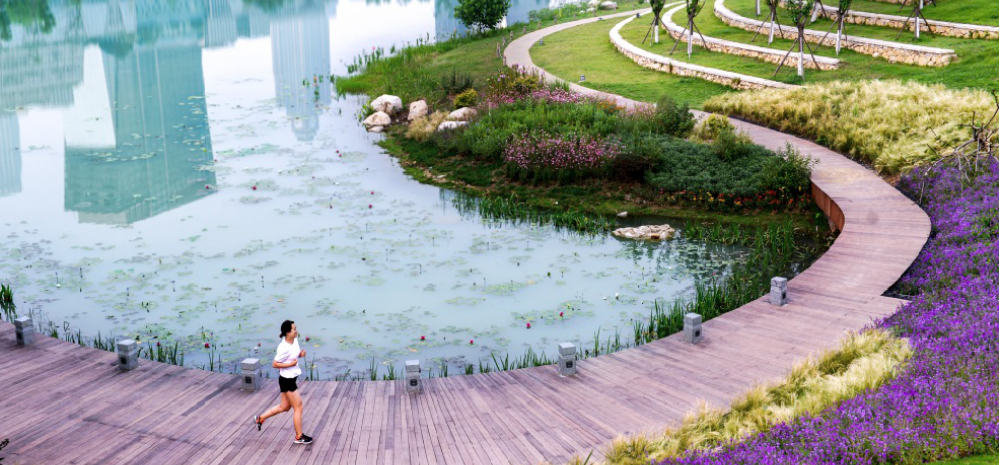You can find out more about our UK – China Healthy Ageing Project here. It is a programme harnessing global intelligence to drive innovation that supports older adults in both the UK and China, helping them to live fulfilling, healthy and comfortable lives for longer.

Photography by UK-China Healthy Ageing Programme
In recent years, China has been developing a new roadamp on how it thinks about its cities, seeing them not merely as hubs of commerce and culture, but as the exercise buddies to its residents. This shift in urban planning signifies a more complete approach to well-being, with a clear emphasis on physical activity and fitness.
Central to China’s efforts is its National Fitness Plan, which sets ambitious targets to ensure accessibility to fitness facilities for all its citizens. For example by 2025, the plan is to ensure that every individual is within just a 15-minute walk of a workout location.
And the plans seem to be working. Older adults hitting professional fitness centers for workouts is on the rise, with an impressive 8.7% of the older population already engaged in this activity. This number is projected to grow even further as newer generations of older people embrace the importance of regular exercise. A staggering 48% of individuals aged 60 and above dedicate time to medium-intensity exercise at least once a week, with 26.1% committing to frequent workouts.
The National Fitness Plan,also recognises that not all our requirements are the same and has ensured a wide reach and range of people, ages, including special programmes for women, and even farmers. Each segment of society has been considered and recommendations tailored to each group.
This personalised approach reflects an understanding of the barriers to physical activity faced by different groups and clearly shows the government’s commitment to inclusivity in its health promotion efforts. It is clear that prioritising accessibility, China aims to ensure that no one is left behind in the pursuit of better health outcomes.
As the Chinese population continues to age, there will be a growing need for fitness services that incorporate rehabilitation and care for chronic conditions. However as the older population in China becomes more active, there will be a parallel increase in demand for fitness products that cater specifically to their needs. These offer rich opportunities for innovation and growth not only to meet the immediate needs of older adults in China but also to drive advancements in the global fitness industry.
Here are a few examples of what is happening in China’s Cities:
In Chengdu, a city in southwest China, wetlands are being used to build parks for public leisure, entertainment, and fitness. Former industrial areas are being transformed into urban parks, providing spaces for exercise and relaxation (Source).

Chengdu's repurposed wetlands
Shenzhen has been organising an annual activity inviting residents to walk 10,000 steps together for ten consecutive years, recognising walking as a beneficial form of exercise for people of all ages (Source).

Shenzhen annual walking event
A district in Shanghai is planning the construction of sports and health centres for older people, providing comprehensive services including physical fitness testing, health testing, fitness guidance, exercise intervention for chronic diseases, rehabilitation training, health education, and a place to meet friends. (Source).

New integrated sports and health centre
These examples show just a few of the diverse approaches taken by different Chinese cities to encourage physical activity and promote public health. From using natural landscapes for exercise purposes to organising community events and constructing specialised facilities, cities across China are actively engaging with citizens to create healthier urban environments. As China continues to prioritise the well-being of its residents, its cities serve as inspiring models for promoting exercise, longevity, and overall wellness.

 &
& 



